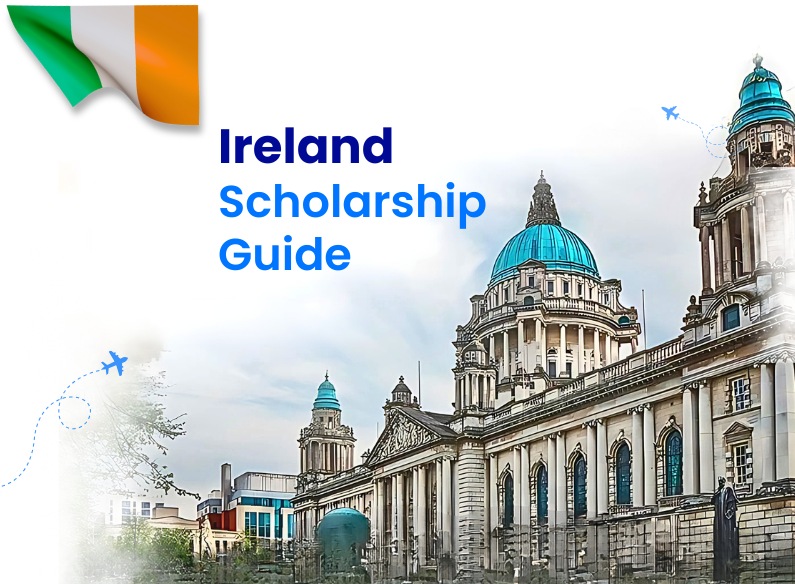
Education Loans for Master’s Abroad: How to Choose the Right Bank or NBFC in 2026
In this article
Dreaming of a master’s degree abroad? You’re not alone. Thousands of Indian students are packing their bags and ambitions every year to pursue higher education overseas. But as exciting as it is, one big question can stop everything in its tracks: how will I fund it?
This is where a student education loan for study abroad becomes your financial lifeline. Regardless of whether you apply with a study abroad consultant or by yourself, the process of selecting a bank or NBFC to take an education loan for a masters abroad in 2026 can be the difference between how much you end up paying back and how stress-free the whole process is.
Key Differences: Bank vs. NBFC for Education Loans
Before deciding on a lender, it is essential to understand the key differences between NBFCs and banks. The decision and the better one will be based on your finances, the loan amount, and the urgency.
Here’s a quick comparison to help you decide:
| Feature | Bank | NBFC |
| Regulation & Oversight | Regulated under strict RBI banking norms | Regulated by RBI but more flexible in lending norms |
| Collateral/Asset Requirements | Traditionally stricter for large loans | More willing to offer unsecured or lower‑collateral loans |
| Turnaround Time | Relatively slower due to procedural checks | Generally faster, with digital processing |
| Eligible Universities & Courses | May restrict to pre‑approved universities | Often wider acceptance including niche courses |
| Flexibility in Repayment | Standard EMI, moratorium periods, foreclosure penalties | Often more custom plans (step-up, interest-only during study) |
When choosing between a bank or an NBFC, the ideal mix is: trust and stability from a bank, paired with the flexibility and speed of an NBFC. Many students opt for banks for core sums and NBFCs for the extra costs (living, travel) or vice versa.
What to Prioritize When Choosing a Lender in 2026
The selection of the appropriate lender is not limited to interest rates. You must consider some of the major elements that influence your loan experience, including approval and repayment. Consider these important criteria before making your decision:
Collateral Requirement / Unsecured Option
If you don’t own property to pledge, you’ll want lenders who offer an education loan without collateral. Some banks and NBFCs do offer unsecured loans, albeit with higher scrutiny and sometimes higher interest.
Interest Rate & Margin / Margin Money
A few percentage points difference over 10-15 years can drastically change your total outflow. Also, check how much margin the lender requires (e.g., they may ask you to fund a small fraction yourself).
Pre‑Approved University List & Acceptance of Your Institution
Some lenders limit support to their list of approved foreign universities. If your university is not on the list, disbursement may be delayed or denied.
Disbursal Method and Timing
Does the lender disburse directly to your university/vendor (tuition, accommodation) or to you? How many tranches? What checks are needed before disbursal?
Moratorium & Repayment Flexibility
Evaluate how long you have before repayment begins, whether you pay interest during that period, and if you can shift to full EMI post‑study or change repayment schedule.
Processing & Hidden Fees
Processing fees, legal charges, valuation costs, prepayment/foreclosure penalties, these add up. Get a full fee schedule.
Support & Reputation
Given the complexity of international study loans, you’ll benefit from lenders who maintain good customer support, clarity in communication, and fewer surprises.
Top Banks & NBFCs Offering Education Loans Without Collateral in 2026
If you don’t have property or assets to pledge, don’t worry, many lenders now offer collateral-free education loans for study abroad. These options are especially helpful for students who want quicker approvals with less paperwork.
Wondering which bank gives an education loan without collateral? Here’s a list of top banks and NBFCs offering unsecured loans for students planning to study abroad.
| Lender | Unsecured Limit | Notes & Highlights |
| SBI (Global Ed‑Vantage) | Up to INR 50 lakh (for premier institutes) | SBI does offer unsecured components for select students/universities |
| ICICI Bank | Up to INR 1 crore for premier institutes (select) | Collateral‑free education loan options available for top institutions |
| Axis Bank | Up to INR 1.5 crores (select) | Offers unsecured education loan schemes with faster processes |
| IDFC FIRST Bank | Up to INR 75 lakh (for select universities) | Promoting unsecured foreign education loans |
| HDFC Credila (NBFC) | Up to INR 75 lakh | Strong NBFC in education finance offering collateral‑free options |
| Avanse | Up to INR 1.25 crores | NBFC specializing in foreign education finance; flexible terms |
| Auxilo | INR 60 lakh (variable) | Offers education loan without collateral depending on profile & university |
| InCred | INR 1 crore | NBFC option with quicker decisions, especially for good academic profiles |
Step-by-Step: How to Select the Right Lender
Choosing the right lender can feel overwhelming, but breaking it down step by step makes it manageable. From understanding your finances to using the right support, each move matters.
Here’s a simple process to help you make the smartest choice:
Step 1: List Your Financing Needs
Estimate total cost: tuition + living + travel + contingencies. This helps you know how much you need beyond what your family can contribute.
Step 2: Check Your Eligibility / Credit Profile
Ensure you and your co-applicant (usually a parent/guardian) have stable income, good credit score, and supporting documents.
Step 3: Shortlist Eligible Lenders
Based on your university, course, and repayment timeline, filter banks/NBFCs that support your target abroad institution.
Step 4: Request Multiple Loan Offers
Apply for pre‑sanction or indicative quotes from 2-3 lenders. Compare interest, total cost, flexibility.
Step 5: Use a Study Abroad Consultant Smartly
A study abroad consultant, such as Nomad Credit, can help negotiate with lenders, share their prevalent lender partners, help with documentation, and coordinate with foreign universities.
Step 6: Negotiate Better Terms (If Possible)
Some lenders reduce margin, waive certain charges, or offer concessions (especially if the consultant has tie-ups).
Step 7: Finalize, Sign, and Ensure Direct Disbursal
Before accepting, ensure the lender will pay fees as per your university schedule (not delay or retain). Also, know the disbursement triggers (admission confirmation, visa, etc.).
Find Your Ideal Loan in Minutes!
Secure the Right Loan for Your Masters with Confidence
Choosing the right lender for your education loan for a masters abroad in 2026 is all about balance, between interest rates, flexibility, and your financial comfort. While banks bring stability and often offer lower rates, NBFCs provide speed, convenience, and a better chance of securing a student education loan for studying abroad without collateral. The key is knowing your needs and comparing all options before signing on the dotted line.
Not sure where to start? Nomad Credit can help you compare multiple banks and NBFCs, find no-collateral loan options, and guide you through the process, from pre-approval to final disbursal. Let Nomad Credit make your study abroad funding stress-free and student-friendly.

Frequently Asked Questions
Can I get a 100% loan (tuition + living + travel) without collateral?
It depends. Some NBFCs may offer full coverage for students with outstanding academic and co-applicant profiles, but banks often limit unsecured loans to tuition or certain caps.
What happens if the lender is unwilling to fund my selected university?
You’ll need to switch to a lender that accepts that university, or ask your consultant to help negotiate special approval or co‑finance options.
Are margins always required even in unsecured loans?
Yes, many lenders still demand a small margin (e.g. 5-10%) from the student’s side, especially for unsecured amounts.
Does paying interest during the moratorium add to my burden?
Yes, unpaid interest (if capitalised) increases your principal, so pick lenders who either waive interest during moratorium or allow interest-only payments.
If my co-applicant is self-employed, does it reduce my chances?
It depends on their income documentation, credit score, and stability. NBFCs often evaluate more flexibly, especially for education loans.
How can Nomad Credit help me in this selection process?
Nomad Credit can help you compare real lender offers tailored to your destination, analyze total cost scenarios, and assist with documentation to get faster approvals.
Do foreign lenders offer education loans to Indian students (skip Indian banks/NBFCs)?
Some universities have partnerships with financial institutions abroad, but these loans often require stringent guarantees, higher interest rates, or currency risk. Indian lenders remain a more controlled and familiar option.
Book A Free Counseling
Related Blogs
Want to connect with
Our Experts?
We provide keep one to one counselling to
Study Abroad Aspirants









